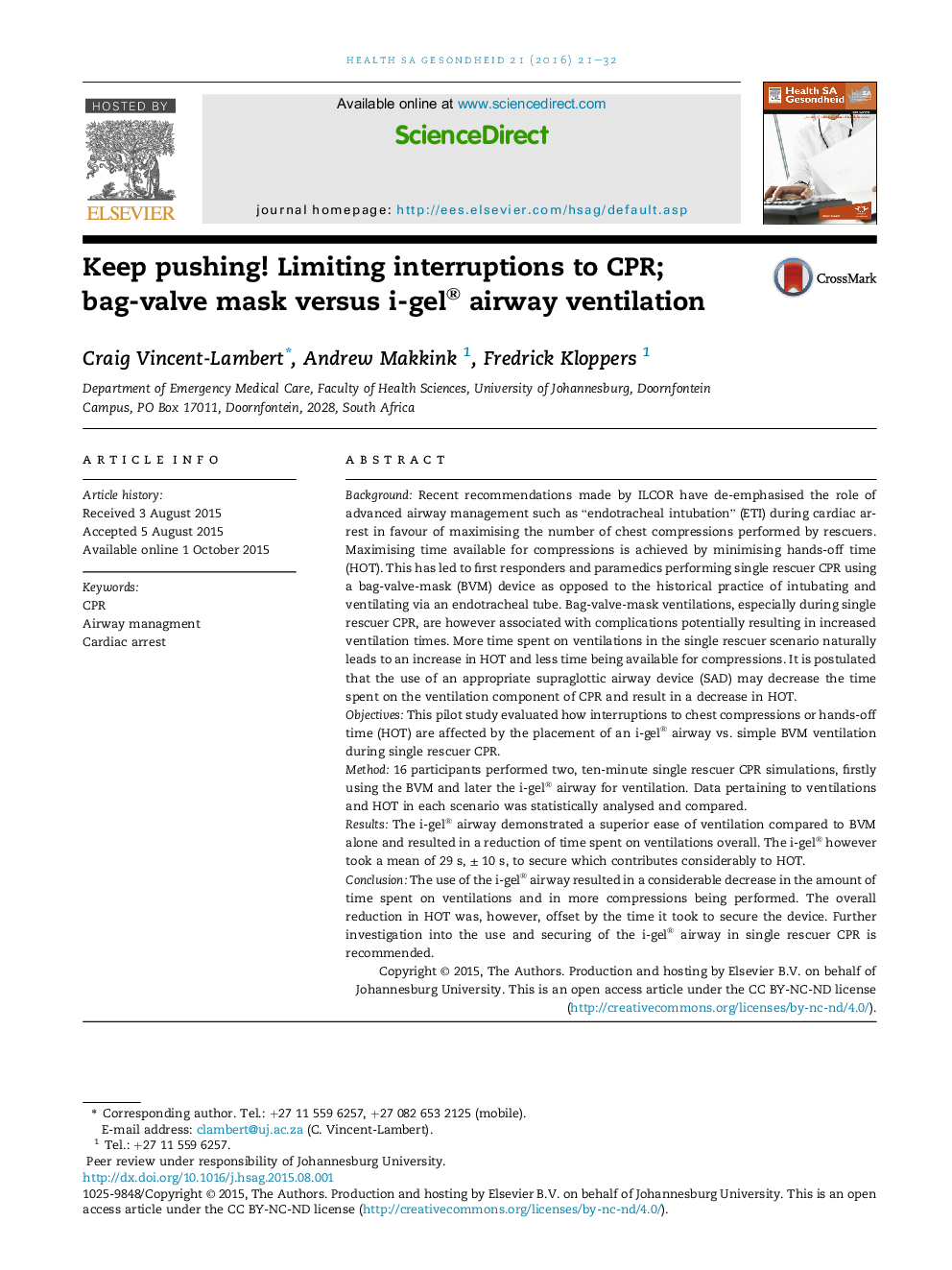| Article ID | Journal | Published Year | Pages | File Type |
|---|---|---|---|---|
| 2650611 | Health SA Gesondheid | 2016 | 12 Pages |
BackgroundRecent recommendations made by ILCOR have de-emphasised the role of advanced airway management such as “endotracheal intubation” (ETI) during cardiac arrest in favour of maximising the number of chest compressions performed by rescuers. Maximising time available for compressions is achieved by minimising hands-off time (HOT). This has led to first responders and paramedics performing single rescuer CPR using a bag-valve-mask (BVM) device as opposed to the historical practice of intubating and ventilating via an endotracheal tube. Bag-valve-mask ventilations, especially during single rescuer CPR, are however associated with complications potentially resulting in increased ventilation times. More time spent on ventilations in the single rescuer scenario naturally leads to an increase in HOT and less time being available for compressions. It is postulated that the use of an appropriate supraglottic airway device (SAD) may decrease the time spent on the ventilation component of CPR and result in a decrease in HOT.ObjectivesThis pilot study evaluated how interruptions to chest compressions or hands-off time (HOT) are affected by the placement of an i-gel® airway vs. simple BVM ventilation during single rescuer CPR.Method16 participants performed two, ten-minute single rescuer CPR simulations, firstly using the BVM and later the i-gel® airway for ventilation. Data pertaining to ventilations and HOT in each scenario was statistically analysed and compared.ResultsThe i-gel® airway demonstrated a superior ease of ventilation compared to BVM alone and resulted in a reduction of time spent on ventilations overall. The i-gel® however took a mean of 29 s, ± 10 s, to secure which contributes considerably to HOT.ConclusionThe use of the i-gel® airway resulted in a considerable decrease in the amount of time spent on ventilations and in more compressions being performed. The overall reduction in HOT was, however, offset by the time it took to secure the device. Further investigation into the use and securing of the i-gel® airway in single rescuer CPR is recommended.
